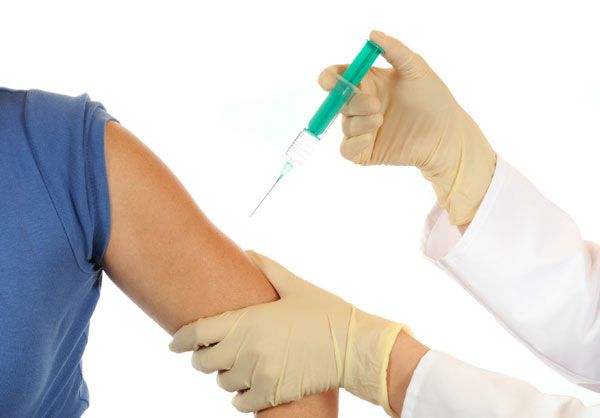How Many Kids Are Up-to-Date With Vaccines?

Most kindergarteners are up-to-date with their vaccines, but data from the state level might mask clusters of unvaccinated children, according to a new report from the Centers for Disease Control and Prevention (CDC).
Among kindergarteners in the 2012-13 school year, vaccine coverage levels were at or near the national goal: Around 95 percent of all kids were up to date with their measles, mumps, and rubella (MMR), diphtheria, tetanus and pertussis (DTaP) vaccines. The chicken pox vaccine levels were slightly lower at 93.8 percent.
Although high levels of coverage at the state level are reassuring, "vaccine-preventable disease outbreaks can still occur among clusters of unvaccinated persons at local levels in schools and communities," the report authors write.
Each school year, the health department or school nurses assess how many kindergarteners have gotten their vaccines, and how many were exempt for medical or religious reasons to determine vaccination coverage in both public and private schools. The data is then aggregated at the state level and reported to the CDC. [5 Dangerous Vaccination Myths]
The new report included vaccine coverage levels in 48 U.S. states and the District of Columbia. Vaccine coverage for MMR ranged from 85.7 percent in Colorado to 99.9 percent in Mississippi, and states in the middle had a coverage level of 94.5 percent.
The DTaP vaccination coverage ranged from 82.9 percent in Colorado and Arkansas to more than 99.9 percent in Mississippi, with the median for all schools reaching 95.1 percent — meaning half of the schools had higher coverage and half had lower coverage than that number.
An estimated 91,453 kindergarteners were reported exempt among a total estimated population of 4,242,558 kindergarteners.
Sign up for the Live Science daily newsletter now
Get the world’s most fascinating discoveries delivered straight to your inbox.
Mississippi showed the lowest rate of exemptions, with just 0.1 percent of kindergarteners there exempt from one or more vaccines for medical, religious or philosophical reasons; the highest rate of exemptions, 6.5 percent, was reported in Oregon.
Forty-six states allowed religious exemptions, whereas 18 allowed philosophic exemptions. Two states, Mississippi and West Virginia, did not allow exemptions for religious or philosophic reasons.
Each year, on average, 60 people in the United States are reported to have measles. In 2011, this number rose to 222, and many of the cases occurred in people who were not vaccinated. This year, measles outbreaks have occurred in several states. One outbreak, in New York, is the largest outbreak in 15 years in the United States, according to the CDC.
Because children who don't get vaccinated tend to be in the same communities, health departments and school systems can use local data to identify schools with high exemption levels, to develop health communication campaigns and ensure parents understand disease risks and vaccination benefits, the report said.
One of the best ways to protect children from measles and other vaccine-preventable disease is to vaccinate them on time. The CDC recommends that parents check their child's vaccination record and ask their doctor about vaccination due date.
The report was published today (August 1) in the CDC's Morbidity and Mortality Weekly Report.
Email Bahar Gholipour. Follow LiveScience @livescience, Facebook & Google+. Original article on Live Science.













